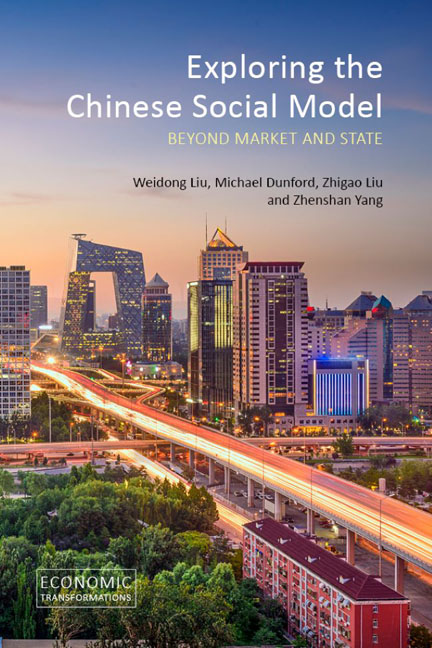Book contents
- Frontmatter
- Contents
- Preface and acknowledgements
- List of illustrations
- 1 Introduction: the China model as a specific socially embedded market economy
- 2 Governance instruments: the role of the party and the state
- 3 Spatial governance instruments in China
- 4 Special economic spaces in China
- 5 Regional development in China
- 6 Poverty alleviation in China
- 7 Conclusion
- References
- Index
5 - Regional development in China
Published online by Cambridge University Press: 20 January 2024
- Frontmatter
- Contents
- Preface and acknowledgements
- List of illustrations
- 1 Introduction: the China model as a specific socially embedded market economy
- 2 Governance instruments: the role of the party and the state
- 3 Spatial governance instruments in China
- 4 Special economic spaces in China
- 5 Regional development in China
- 6 Poverty alleviation in China
- 7 Conclusion
- References
- Index
Summary
INTRODUCTION
In earlier chapters it was explained that the Chinese model involves certain distinctive governance instruments and targets. These instruments and targets have changed over the course of time as domestic and international economic, political, cultural and environmental developments at each stage generated contradictions that were addressed in new waves of reform. In the 1950s the aim was the restoration of national political and economic sovereignty and independence via land reform and national industrialization in a context of fair distribution and worker mobilization. After the rapprochement with the United States in the 1970s, China took out Western and Japanese loans to address shortages of capital that all developing countries confront, and in 1979 it embarked on reform and opening up, allowing some people and places to get rich first so as to develop the productive forces. In 1999, after years of economic growth that was unprecedented in scale and duration but that generated serious environmental problems and wide inequalities, a major strategic reorientation started: alongside a quest for continued economic growth, the aim of people-oriented development progressively unfolded. In 2012 China entered a new era, the goal of which is national rejuvenation and the establishment of a modern socialist country by 2035.
The evolving geography of China's development has itself shaped and been shaped by these changing strategies, targets and instruments, as this chapter will show. More specifically, in the third section some of the broad features of China's territorial development are outlined. These features are in part a reflection of China's geographical and natural resource context, which is therefore examined in the fourth section. Yet they also reflect the evolution of policies and the size, composition and direction of investments designed to industrialize and defend the country, accelerate economic and social modernization, improve living standards and address inequalities and contradictions arising from earlier phases of development, as is shown in the fifth section. The sixth section outlines the instruments that China deploys to meet its regional development objectives. To bring to life in a more vivid way China's regional development, the final section examines more concretely the role of urbanization and economic development in western China through the lens of the recent growth of the municipality of Chongqing.
- Type
- Chapter
- Information
- Exploring the Chinese Social ModelBeyond Market and State, pp. 105 - 134Publisher: Agenda PublishingPrint publication year: 2022



